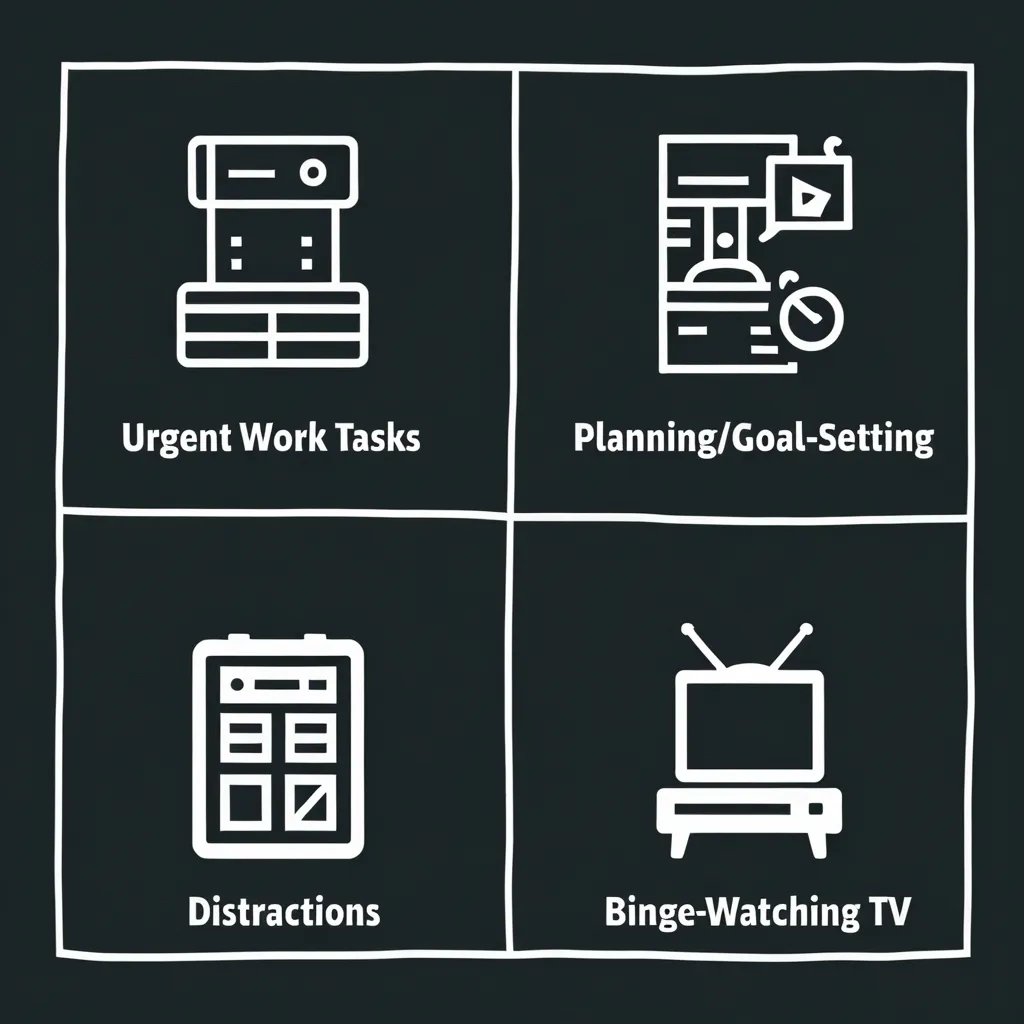In the whirlwind pace of life today, getting a handle on your time can feel like trying to herd cats. Whether it’s balancing work, social commitments, or personal goals, juggling everything without losing your mind seems like a daunting task. But there’s a nifty trick out there that can really help you sort things out: it’s called the Eisenhower Matrix, and it’s your ticket to prioritizing tasks like a pro.
The Eisenhower Matrix is not some convoluted system that only type-A personalities get—it’s a simple, yet impactful way to sort out what you need to do and when. You’re basically looking at a framework that lets you differentiate between what’s urgent and what’s important. The idea is to zero in on what truly matters.
Picture a big square divided into four smaller boxes or quadrants. Along the top, you have urgent on the left and not urgent on the right. And on the side, you’ve got important at the top and not important at the bottom. Each box in this grid represents a task bucket. Sounds simple, right?
Here’s how those four buckets break down:
-
Urgent and Important (Do First) These tasks are your highest priority because they need to get done pronto and they really matter. Think deadlines that are breathing down your neck, crisis moments at work, or emergencies that pop up. These are the things that you should tackle right away, no two ways about it.
-
Important but Not Urgent (Schedule) Now, these are tasks that matter in the grand scheme of things, but they don’t come with a ticking clock. They’re crucial for your long-term goals, whether that’s planning for the future, picking up new skills, or nurturing important relationships. These should be on your schedule but don’t need to be rushed.
-
Urgent but Not Important (Delegate) These tasks demand immediate attention but aren’t really vital in the grand scheme of things. Often, these are the interruptions that steal your focus like trivial emails or non-essential meetings. Whenever possible, hand these off to someone else so you can concentrate on more crucial activities.
-
Not Urgent and Not Important (Eliminate) Here lie the tasks that are neither pressing nor important. These are your time-wasters such as binge-watching TV shows, mindlessly scrolling through social media, or other unproductive activities. Cut these out or at least cut back significantly to boost your efficiency.
Alright, so how do you get started with this Eisenhower Matrix thing?
First off, jot down all the tasks you need to tackle. Literally make a list. Then, use the matrix to slot each task into one of those four quadrants. Next, rank your tasks based on these categories. Your priority should be handling the “Urgent and Important” ones first, followed by the “Important but Not Urgent” ones. Delegate the “Urgent but Not Important” tasks and minimize or get rid of the “Not Urgent and Not Important” ones.
Why should you bother with this? The benefits are pretty sweet.
Improved Time Management: Sorting tasks by urgency and importance ensures you focus on the right things. You’ll dodge that trap of always putting out fires and actually spend time on what pushes your goals forward.
Reduced Stress: Knowing what to prioritize and what to hand off or ignore can seriously lower your stress. When you have a clear game plan, you feel more in control and less overwhelmed. That’s gold, right?
Boosted Productivity: Honing in on the right tasks at the right moment means you get more done in less time. Avoid those pesky distractions and non-essential tasks, and watch your productivity soar.
Strategic Decision-Making: This matrix lets you make smarter choices about where to invest your time and energy. Make sure you’re putting effort into tasks that have the biggest bang for your buck, both personally and professionally.
Let’s break it down with some real-life examples. Picture this: at work, you’ve got a big project deadline coming up and also a meeting that’s not really crucial. With the Eisenhower Matrix, you’d label the project as “Urgent and Important” and the meeting as “Urgent but Not Important”. You’d get cracking on the project and either delegate the meeting or reschedule it.
In your personal life, let’s say you want to stick to a new exercise routine, but you keep getting sucked into social media. Your exercise plan falls into the “Important but Not Urgent” quadrant while scrolling through Instagram lands squarely in “Not Urgent and Not Important”. Schedule your workouts and cut down on social media time.
So, how do you bring the Eisenhower Matrix into your daily grind?
Set Goals and Make a Plan: Start with clear goals and a roadmap for getting there. This helps you pinpoint which tasks are genuinely important.
Take Time to Prioritize: Regularly sift through your tasks and slot them into the matrix. This way, you’re always homing in on what really counts.
Learn to Deprioritize: Understand that you can’t do it all. Get comfy with saying “no” to tasks that don’t fit into the urgent or important categories.
Defend Your Time: Use time-blocking to keep interruptions at bay. Let people know when you’re on and off the clock, ensuring you’ve got uninterrupted time to tackle the important stuff.
By weaving the Eisenhower Matrix into your routine, you change how you manage time and tasks. It’s a simple, powerful tool to help you prioritize what matters most, keeping stress at bay and nudging your productivity up a notch. Whether wrangling a busy career or a bustling personal life, this framework can help you hit your goals more efficiently.






